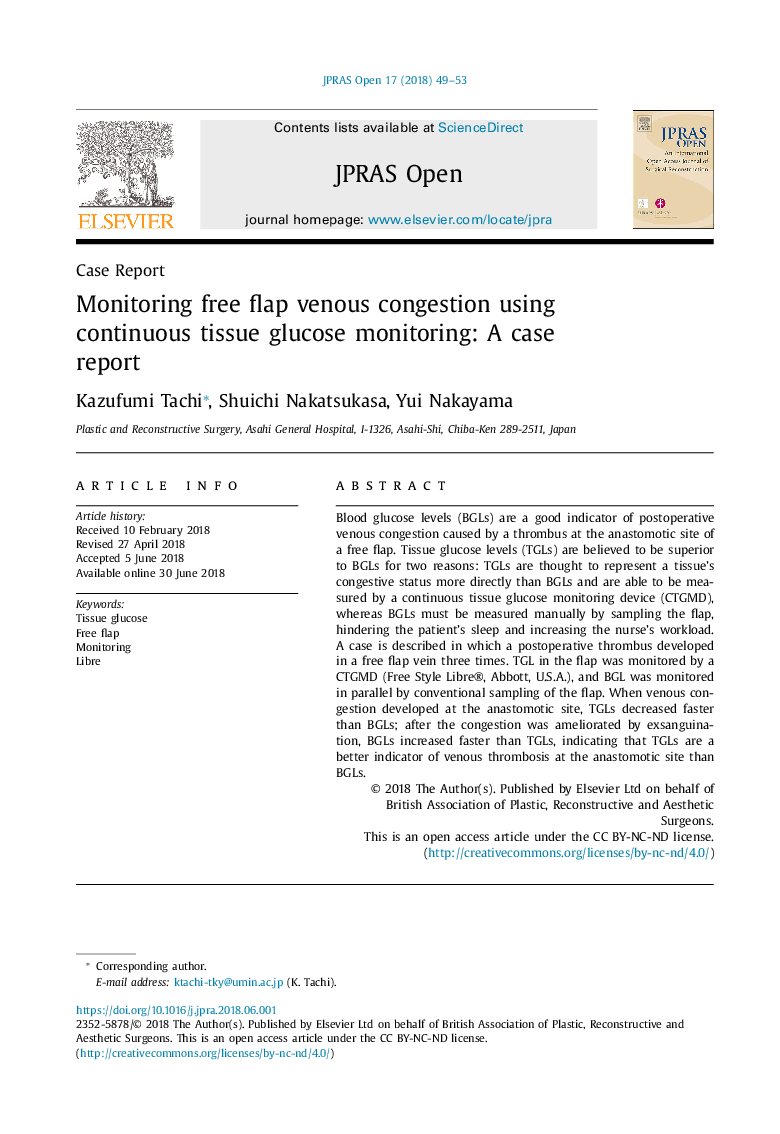| Article ID | Journal | Published Year | Pages | File Type |
|---|---|---|---|---|
| 8836224 | JPRAS Open | 2018 | 5 Pages |
Abstract
Blood glucose levels (BGLs) are a good indicator of postoperative venous congestion caused by a thrombus at the anastomotic site of a free flap. Tissue glucose levels (TGLs) are believed to be superior to BGLs for two reasons: TGLs are thought to represent a tissue's congestive status more directly than BGLs and are able to be measured by a continuous tissue glucose monitoring device (CTGMD), whereas BGLs must be measured manually by sampling the flap, hindering the patient's sleep and increasing the nurse's workload. A case is described in which a postoperative thrombus developed in a free flap vein three times. TGL in the flap was monitored by a CTGMD (Free Style Libre®, Abbott, U.S.A.), and BGL was monitored in parallel by conventional sampling of the flap. When venous congestion developed at the anastomotic site, TGLs decreased faster than BGLs; after the congestion was ameliorated by exsanguination, BGLs increased faster than TGLs, indicating that TGLs are a better indicator of venous thrombosis at the anastomotic site than BGLs.
Keywords
Related Topics
Health Sciences
Medicine and Dentistry
Surgery
Authors
Kazufumi Tachi, Shuichi Nakatsukasa, Yui Nakayama,
